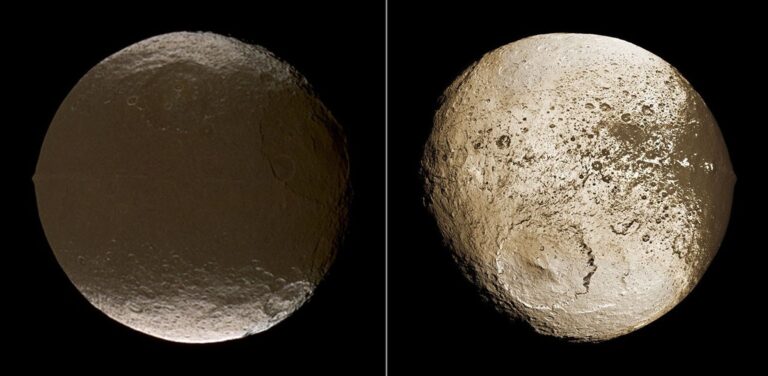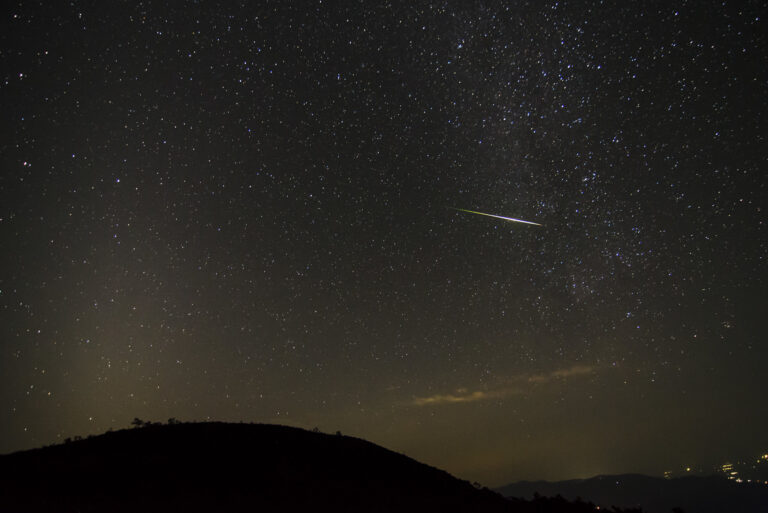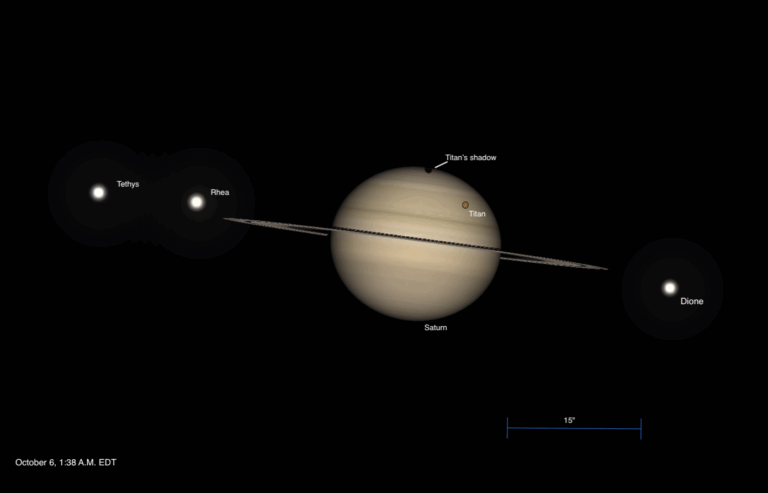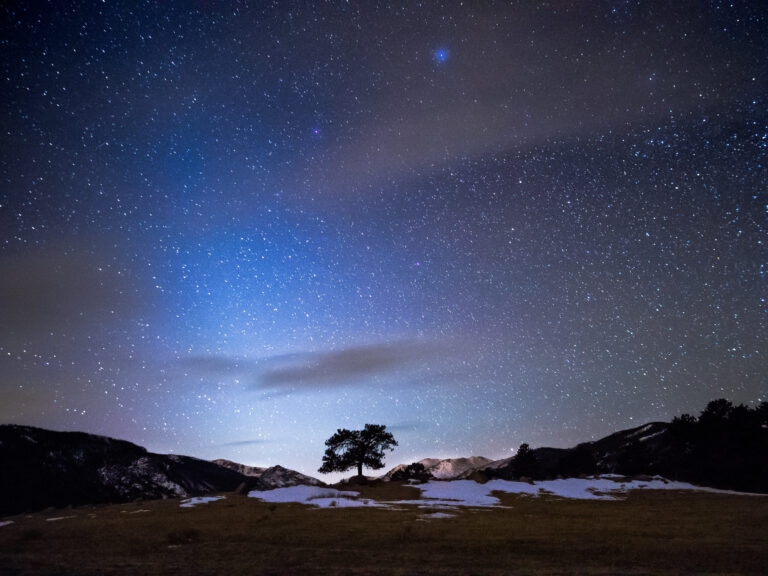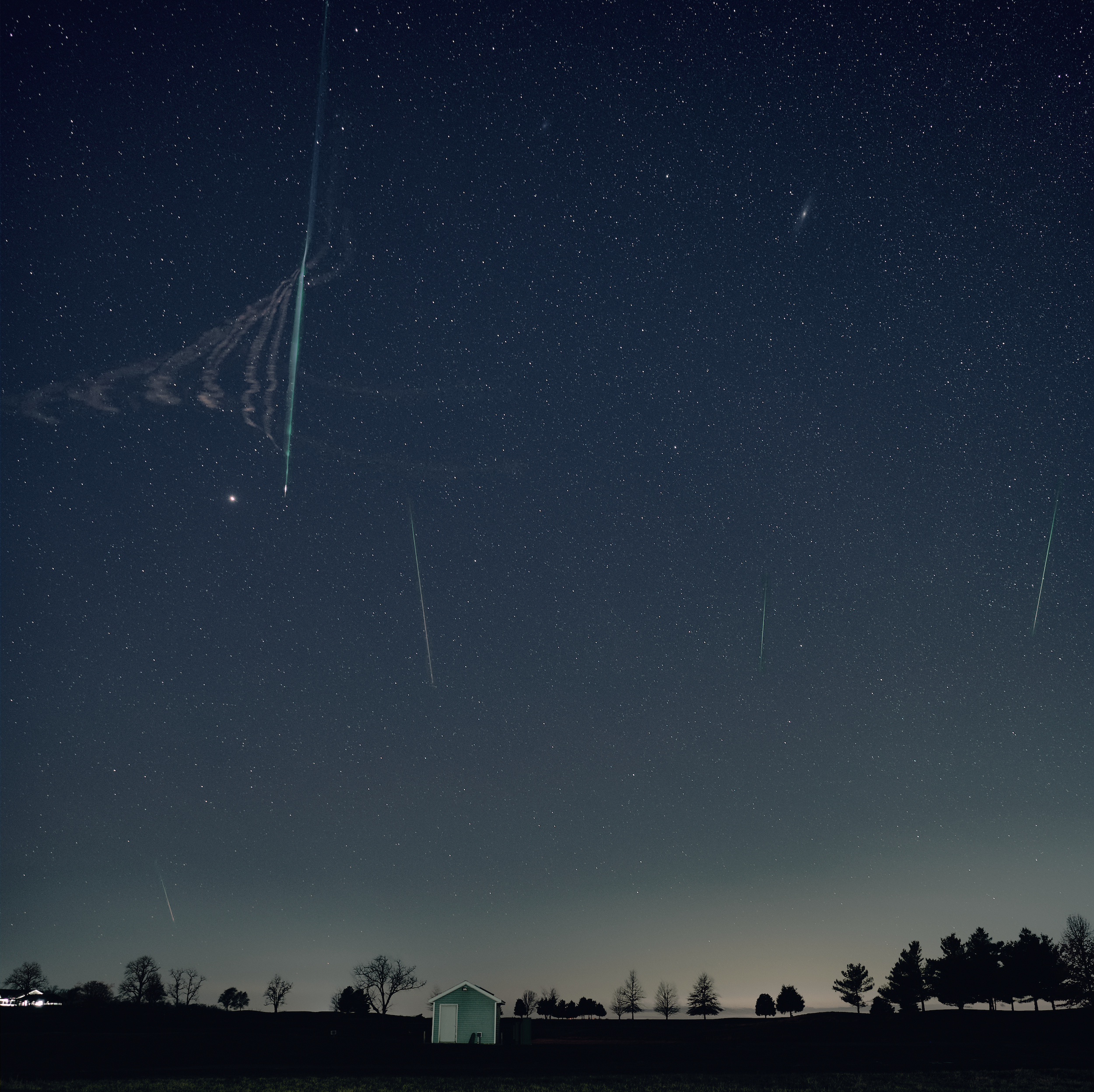
Key Takeaways:
- The article provides guidance for observing multiple deep-sky objects, including open clusters M36, M37, and M38 in Auriga, and the dwarf planet 1 Ceres in Cetus, noting its proximity to the double star HD 2447.
- Specific planetary observation events are detailed, such as Saturn's moon Iapetus reaching western elongation and the visibility of other Saturnian moons (Titan, Dione, Rhea, Tethys), alongside multiple transits of Jupiter's moons (Ganymede, Io) and their shadows across the gas giant's disk.
- The Leonid meteor shower peaks overnight on November 17-18, with recommendations for optimal viewing of bright meteors from a radiant in Leo, enhanced by a minimal crescent Moon.
- The period culminates with Uranus reaching opposition, indicating prime conditions for telescopic observation of its 4-arcsecond disk in Taurus, located near the stars 13 and 14 Tauri.

Sky This Week is brought to you in part by Celestron.
Friday, November 14
Auriga the Charioteer rides high in the sky tonight, reaching an altitude of 70° above the eastern horizon by local midnight. Several bright deep-sky objects call Auriga home, such as open clusters M36, M37, and M38.
Highest in the sky this evening is magnitude 7.4 M38, which lies just under 1.5° north of magnitude 5.1 Phi (φ) Aurigae. Spanning 21’ on the sky, this loose cluster contains many scattered suns and is visible in binoculars or a telescope.
From M38, drop about 2.3° southeast to land on magnitude 6.3 M36. Home to about 60 stars, this young cluster covers about 12’ on the sky, about half the size of M38. However, that makes it a bit more concentrated and easy to identify, as its stars appear less scattered.
Finally, move 3.7° east-southeast of M36 to finish at M37, the brightest of the trio at magnitude 6.2. At 24’ in diameter, it’s also a touch larger than M38 and contains a total of about 500 stars. Despite its total size, however, this cluster will also appear more centrally concentrated than M38, which is the loosest of the three.
Sunrise: 6:44 A.M.
Sunset: 4:44 P.M.
Moonrise: 1:19 A.M.
Moonset: 2:03 P.M.
Moon Phase: Waning crescent (22%)
*Times for sunrise, sunset, moonrise, and moonset are given in local time from 40° N 90° W. The Moon’s illumination is given at 10 P.M. local time from the same location.
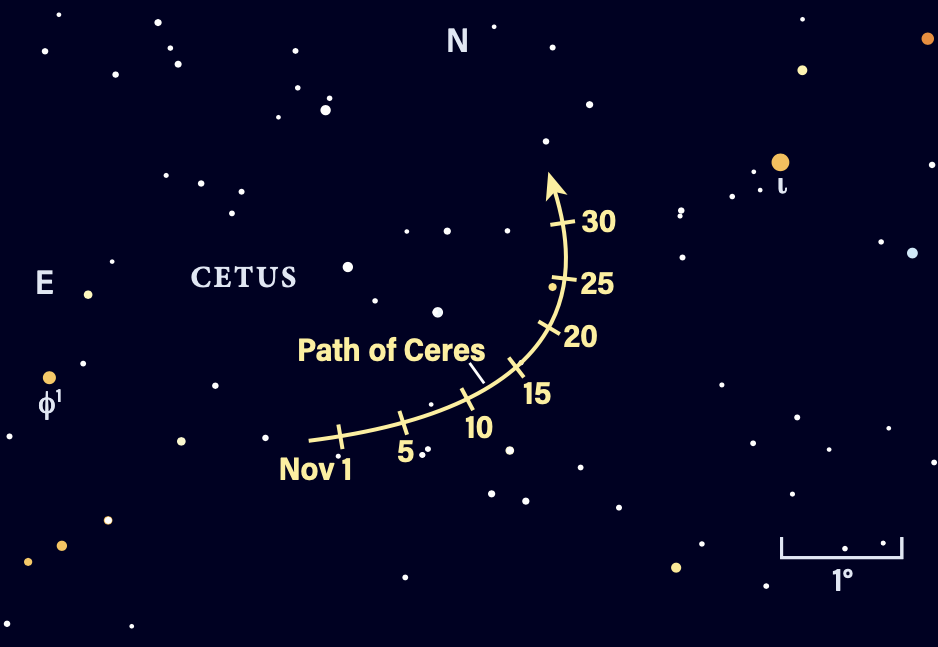
Saturday, November 15
Dwarf planet 1 Ceres, the ruler of the main belt, is currently making its way through Cetus the Whale. Tonight Ceres is approaching the double star HD 2447.
The best time to catch the scene is around 9 P.M. local time, when Ceres is highest in the sky. You’ll find it in the south, to the lower left of the bright planet Saturn, which dominates this region. About 9.5° southeast of Saturn is the magnitude 3.6 star Iota (ι) Ceti. From this star, move your binoculars or telescope about 2.7° farther southeast to locate 9th-magnitude HD 2447, whose companion is about 45” away. Slightly brighter 8th-magnitude Ceres is some 4.5’ southeast of this pair. You can capture all three points of light in a single field of view.
Come back tomorrow night at the same time to see that Ceres has moved just northwest of these stars — it will sit roughly 1’ from the northernmost star in the pair the night of the 16th.
Sunrise: 6:45 A.M.
Sunset: 4:43 P.M.
Moonrise: 2:20 A.M.
Moonset: 2:23 P.M.
Moon Phase: Waning crescent (15%)
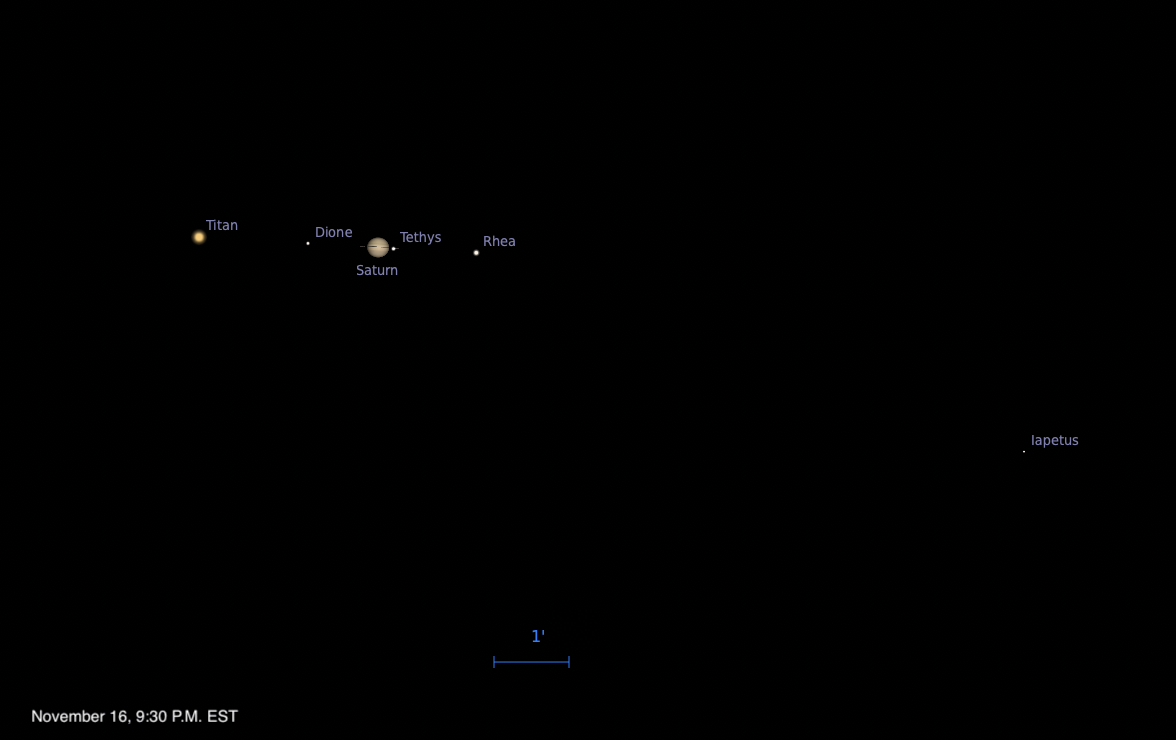
Sunday, November 16
Saturn’s moon Iapetus reaches western elongation today, when it is at its brightest. Now around 10th magnitude, you can find Iapetus some 10’ west of Saturn.
The ringed planet is already above the horizon as the Sun sets; two hours later it is 40° high in the south, hanging below the Circlet of Pisces. It’s the brightest light in this part of the sky, shining at magnitude 0.8. Don’t confuse it with slightly fainter magnitude 1.2 Fomalhaut, which lies much closer to the horizon to Saturn’s lower right.
Zoom in on Saturn with a telescope to view its brighter moons. Easiest to find is mid-8th-magnitude Titan, which lies some 2.3’ east of Saturn this evening. Closer to Saturn, 10th-magnitude Dione, Rhea, and Tethys may also be visible, depending on when you look. Dione lies just east of Saturn, while Rhea is just to the west. Tethys is transiting the planet — likely invisible to visual observers — for three hours, between roughly 6 P.M. to 9 P.M. EST. Before this, it is visible close to Saturn’s eastern limb; afterward, it can be seen moving away from the planet’s western limb.
Iapetus is roughly the same magnitude as these three fainter moons, but much farther from the planet. It lies 10’ to the planet’s west. There is a slightly fainter 11th-magnitude field star just 5’ farther west than Iapetus, so make note not to confuse the two. Of the two, Iapetus is slightly brighter and closer to Saturn.
Sunrise: 6:47 A.M.
Sunset: 4:42 P.M.
Moonrise: 3:21 A.M.
Moonset: 2:43 P.M.
Moon Phase: Waning crescent (9%)
Monday, November 17
The Moon passes 1.2° south of Spica at 6 A.M. EST. The pair is visible in the early-morning sky before sunrise, our Moon now a delicate crescent with just 7 percent of its nearside illuminated by the Sun. If you step outside at 6 A.M. local time, you’ll also catch bright Venus to the lower left of the pair, just a bit more than 2° above the eastern horizon in Libra.
Pull out a telescope and you’ll see that Venus’ 10”-wide disk is 98 percent lit, looking nearly full. By contrast, the Moon is largely dark, but you can still make out features on the nearside thanks to earthshine, as light from the illuminated Earth lights up the Moon’s shadowed regions. Make sure to put away any optics at least several minutes before sunrise from your location, which may differ from the time below.
In the evening sky, Jupiter’s large moon Ganymede is transiting the gas giant’s disk. The planet rises around 8:40 P.M. local time in Gemini the Twins. The transit begins shortly after Jupiter rises for observers along the U.S. East Coast, as Ganymede moves in front of the planet’s eastern limb. Farther west, the moon appears progressively further in its transit, moving from east to west, as the planet rises. Ganymede finally reaches Jupiter’s western limb early on the 18th for those in the Eastern time zone only, at 12:55 A.M. EST (still late on the 17th farther west).
The Leonid meteor shower peaks overnight tonight, with the radiant rising around 11 P.M. local time. The best opportunities to catch bright shower meteors will be tomorrow morning during the early hours of the 18th, when the radiant is high and observers are on Earth’s leading hemisphere. Keep reading for more details in tomorrow’s entry.
Sunrise: 6:48 A.M.
Sunset: 4:42 P.M.
Moonrise: 4:21 A.M.
Moonset: 3:05 P.M.
Moon Phase: Waning crescent (4%)

Tuesday, November 18
The Leonid meteor shower should produce many bright meteors visible early this morning. The radiant, located in Leo to the upper left of bright Regulus and near the 3rd-magnitude star Zeta (ζ) Leonis, has climbed to more than 50° high in the east by 4 A.M. local time. The thin crescent Moon wont’ rise until around 5:30 A.M. local time, though even then it won’t interfere much.
Leonid meteors are often fast-moving and leave long, bright, persistent trains in the sky. You’re most likely to see the longest trains some 40° to 60° away from the radiant, so scan your eyes to the left and right of Leo in the sky once you’ve found it. Although the maximum rate at peak is only about 15 meteors per hour, the bright shower members that do appear will certainly be worth catching. No equipment is necessary for this — naked-eye observing is best!
Tonight in the evening sky, distant Neptune stands 2° due north of 27 Piscium, a 5th-magnitude star in Pisces. You can find the magnitude 7.7 planet in binoculars or a telescope by first locating bright Saturn. From here, skim about 4° northeast and look for a line of three stars that shine between 4th and 5th magnitude. The southeasternmost and brightest star in this line is 27 Psc, and Neptune is due north of it. Note there is another 5th-magnitude star about 1° northeast of 27 Psc, but this is not the planet. It will be much brighter than Neptune, as well as much closer to 27 Psc than the planet’s location.
Sunrise: 6:49 A.M.
Sunset: 4:41 P.M.
Moonrise: 5:23 A.M.
Moonset: 3:30 P.M.
Moon Phase: Waning crescent (1%)
Wednesday, November 19
The Moon now passes 6° south of Venus at 4 A.M. EST. When it rises around 6:30 A.M. local time, the Moon will be less than 1 percent lit and less than 24 hours from New, posing an extreme challenge for viewing. However, if you want to give it a try, it is possible — just take extreme care never to point any optics, such as binoculars or a telescope, near the rising Sun.
Related: Is the New Moon ever visible?
Earlier in the morning, however, there’s an easier observation to make: bright Venus near magnitude 2.8 Zubenelgenubi, also cataloged as Alpha2 (α2) Librae. Try for the pairing about 40 minutes before sunrise, when the two are about 3° high in the east. At magnitude –3.9, Venus is easy to find. Zubenelgenubi is 0.8° to the planet’s right, roughly even with it in altitude as it rises. If you can’t see the star without optical aid in the brightening sky, try using binoculars or a telescope. Both will appear in the same field of view.
The Moon reaches apogee at 9:48 P.M. EST. This is the farthest point from Earth in its orbit around our planet, and our satellite will sit 252,706 miles (406,691 kilometers) away at that time.
Sunrise: 6:50 A.M.
Sunset: 4:40 P.M.
Moonrise: 6:25 A.M.
Moonset: 3:59 P.M.
Moon Phase: New
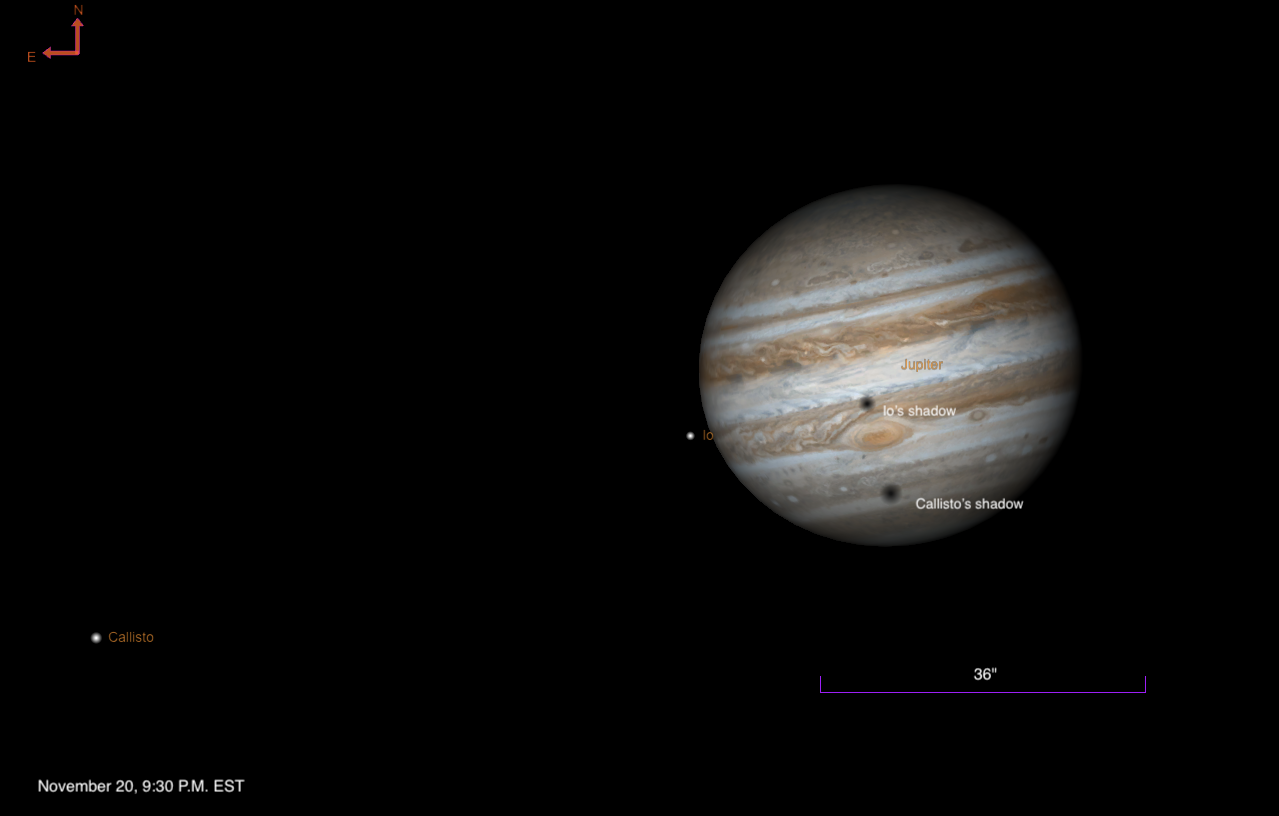
Thursday, November 20
New Moon occurs at 1:47 A.M. EST. A few hours later, Mercury reaches inferior conjunction with the Sun at 4 A.M. EST.
Tonight, all the action is over at Jupiter. The giant planet rises in Gemini around 8:30 P.M. local time; as soon as it’s visible above the horizon, East Coast observers will notice two dark shadows near the southeastern limb. The larger shadow closer to the planet’s center is Callisto’s, although that moon lies far to the planet’s east. Closer to the planet’s limb is Io’s shadow, which belongs to the small bright point that is also closer to the planet on the eastern side. Europa and Ganymede lie to Jupiter’s west.
By 9:30 P.M. EST, Io’s shadow has caught up to Callisto’s and both are roughly central on the disk, with Io’s shadow north of Callisto’s. Io is nearly at the limb — it begins a transit around 9:37 P.M. EST. Io’s shadow quickly overtakes Callisto’s, reaching the western limb first and exiting by 10:10 P.M. EST, with Io a little more than halfway in its journey across the disk from east to west. Callisto’s shadow is now nearing the southwestern limb, finally disappearing shortly before 11:30 P.M. EST. Io’s transit ends not long before midnight EST. Which of these events you will be able to see will depend on your time zone.
Tomorrow morning, starting at 5:53 A.M. EST on the 21st, Callisto will finally reach Jupiter’s eastern limb and begin to transit. Everyone across the U.S. will be able to catch the transit’s start, though the Sun will rise with Callisto still crossing the disk.
Sunrise: 6:51 A.M.
Sunset: 4:40 P.M.
Moonrise: 7:28 A.M.
Moonset: 4:33 P.M.
Moon Phase: Waxing crescent (1%)
Friday, November 21
Uranus reaches opposition at 7 A.M. EST. Now is the best time to see the distant ice giant, floating among the stars of Taurus.
At opposition, planets rise around sunset and set around sunrise. Because Uranus is faint (magnitude 5.6), you’ll want to give it time to climb above the hazier air near the horizon. By 8 P.M. local time, Uranus is nearly 40° high in the east, located to the lower right of the easy-to-find Pleiades star cluster (M45).
Pull out binoculars or any telescope and center on the Pleiades. From there, move about 4.3° south (to the lower right) and look for a pair of 6th-magnitude stars side by side: these are 13 and 14 Tauri. Uranus currently forms an east-west line with these stars, standing about 0.9° east of the easternmost star in the pair (slightly fainter 14 Tau). At magnitude 5.6, Uranus is brighter than 14 Tau and roughly the same brightness as 13 Tau, sandwiching the fainter star between them.
In a telescope, you may be able to discern the planet’s 4”-wide disk, which will look like a tiny, circular, “flat” star that shows off a grayish hue.
Sunrise: 6:52 A.M.
Sunset: 4:39 P.M.
Moonrise: 8:28 A.M.
Moonset: 5:16 P.M.
Moon Phase: Waxing crescent (3%)



